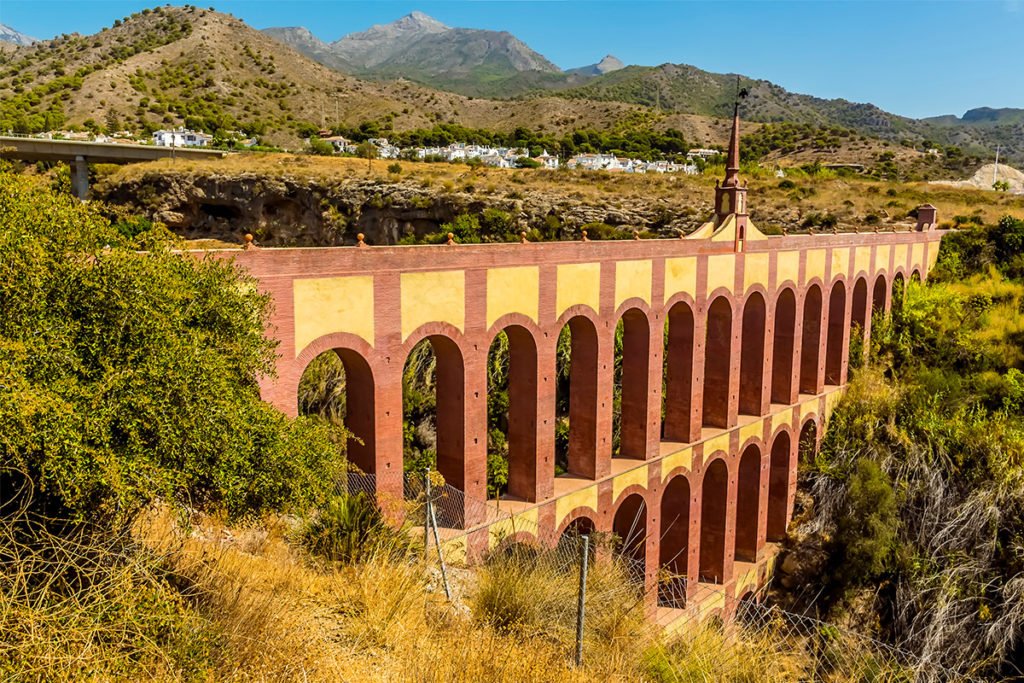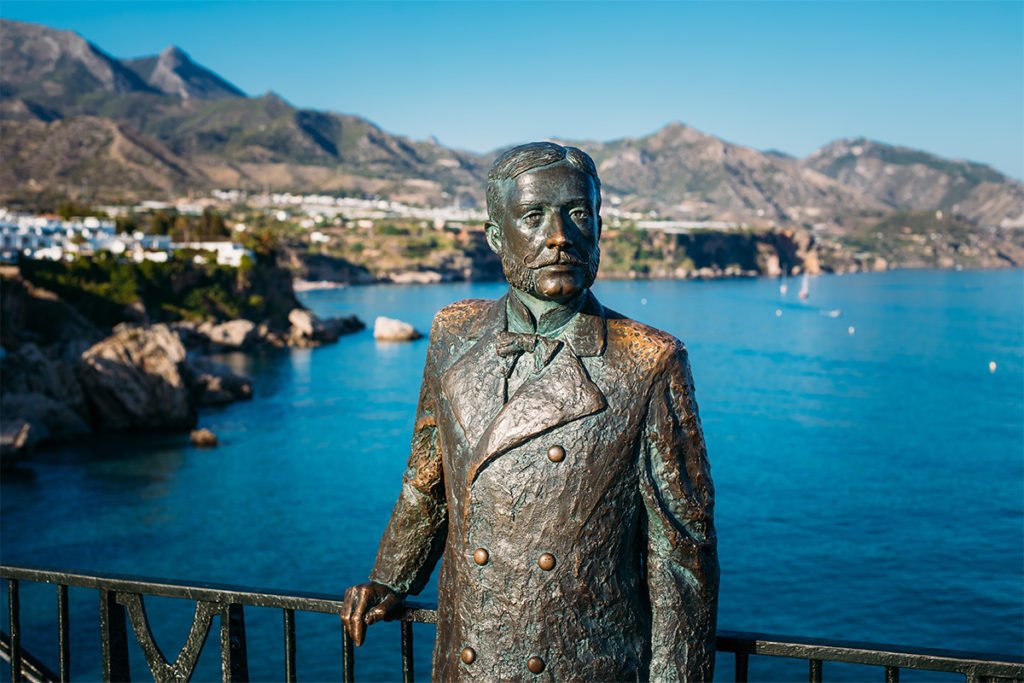A beautiful whitewashed town, narrow streets full of secluded spots, restaurants with the best seafood, wide beaches and a host of interesting attractions. Doesn’t that sound like the perfect recipe for a vacation? We invite you to the Costa del Sol, or more specifically, the town of Nerja!
Nerja is a town in Andalusia located between the Sierra de Tejeda mountains and the Mediterranean Sea. The fast connection via the A7 road from Malaga makes it one of the most popular places on the Costa del Sol. Tourism is the main branch of the local industry, which is particularly evident in the summer season, when the number of tourists is sometimes twice as high as the number of permanent residents of the city. However, not only the convenient location and over 320 sunny days a year are arguments to visit this particular place on the Costa del Sol. What else? We have a couple of examples of interesting attractions that have stolen many people’s hearts! Maybe it will be the same in your case?
Nerja – because small is beautiful
Nerja in Arabic means “the fullness of spring”. Indeed, the coasts of the Costa del Sol guarantee the fullness of spring, but this Spanish one, so equally sunny as summer. The former fishing village gained fame, among others, thanks to the famous youth series in Spain from 1981 – “Verano Azul”. The city abounds in interesting places, but it also has beautiful beaches ideal for both beachgoers and those willing to practice water sports. When planning a trip, one day will definitely not be enough to enjoy the beauty of the town of Nerja!
Beaches in and around Nerja
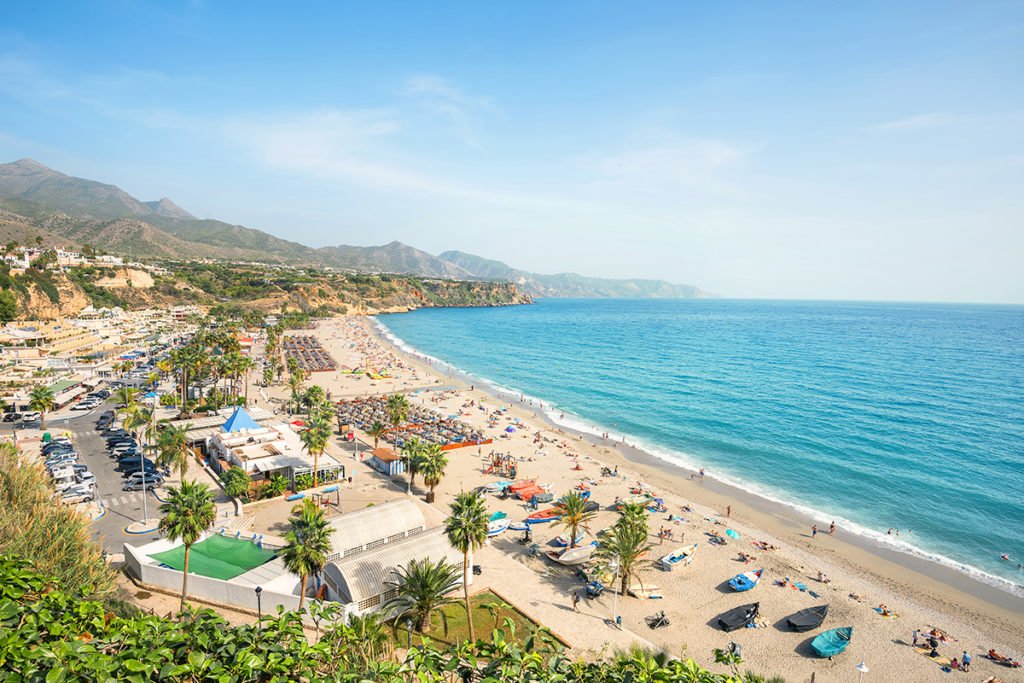
For relaxation, we definitely recommend Burriana Beach, which is considered the longest in the area (700 meters) and the most beautiful. It is no wonder that the iconic Parador de Turismo hotel dominates it. Other city beaches that will also be a great choice are La Torrecilla, El Salón and Calahonda (the beach can be seen directly under the Balcony of Europe).
In Nerja, there are also a couple of more secluded beaches hidden between the cliffs, which will 100% allow you to enjoy the sea! La Caleta, la Cala Barranco de Maro or Calas del Pino are just some of them. They offer a whole range of water sports from sailing to windsurfing.
The town of Nerja and its old town
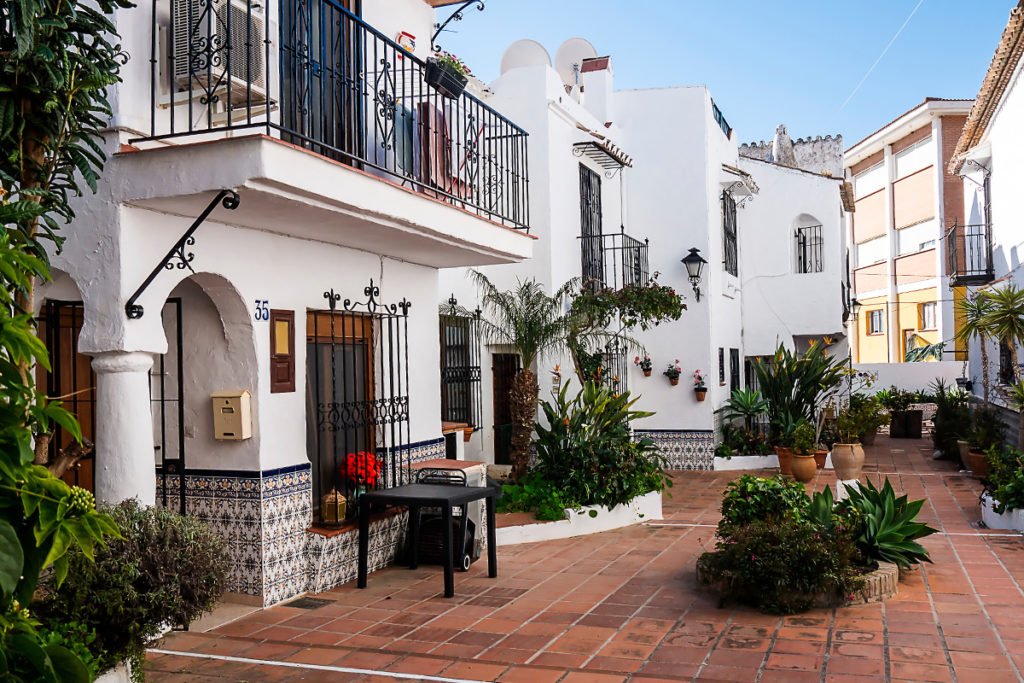
The old town of Nerja is characterized by the white buildings popular in the south of Spain, which effectively reflect the sun’s rays, lowering the temperature in the buildings. In the center of the city there is a promenade connected to the Balcony of Europe. From this place we will have a view of the El Salvador Church (Iglesia El Salvador), which will attract our attention due to the mix of architectural styles – neo-classical and baroque. This is due to the fact that although the main building was built in 1697, the last extensions took place 300 years later.
NICE TO KNOW: Are you planning to get married in the El Salvador church? Be patient. It has the longest waiting list on the entire Costa del Sol. On the other hand, it is very possible that during your stay in Nerja you will see a traditional Spanish wedding ceremony there!
In the depths of the city there is a chapel of the local patron saint, Nuesta Señora de las Angustias, dating from the 16th century. It is distinguished by an internal golden dome covered with frescoes. The largest local celebration – Feria de Nerja celebrated from 8 to 12 October – is dedicated to her and Archangel Michael.
The Cave in Nerja (La Cueva de Nerja)
Do you want to see with your own eyes what the largest stalagnate in the world looks like, additionally entered in the Guinness Book of Records? Such an attraction awaits you in the Cueva de Nerja cave. It is one of the largest caves in all of Spain, which was only discovered in 1959, although it is estimated that it was inhabited around 25,000 BC! A place worth visiting especially in the middle of summer, when you want to escape from the heat pouring from the sky :).
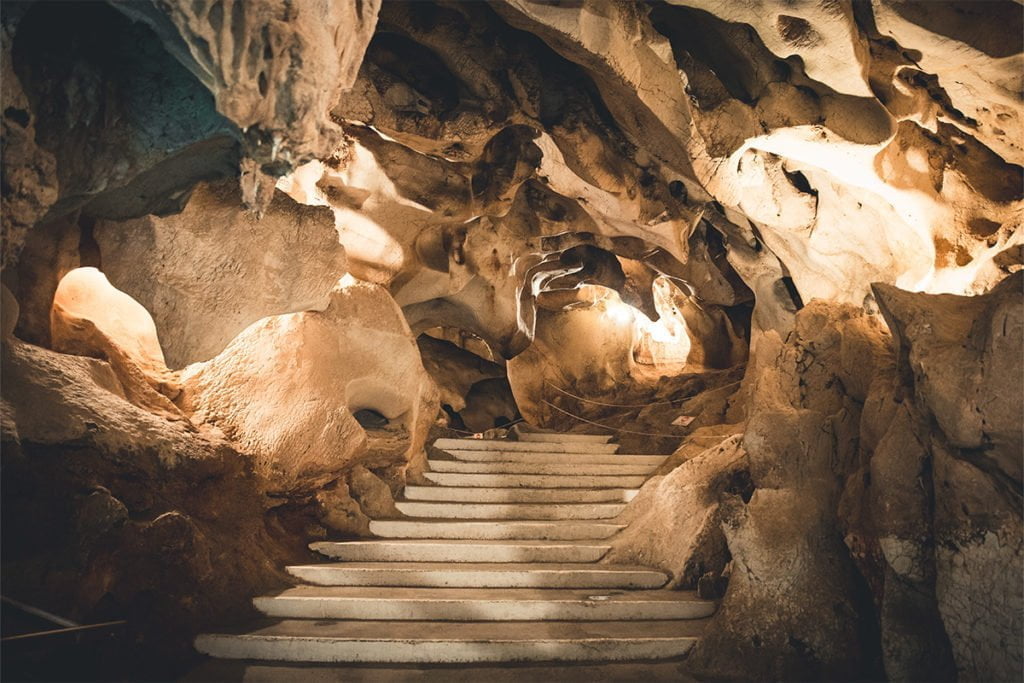
The Águila Aqueduct (Acueducto del Águila de Nerja)
I don’t know about you, but I always have some sentiment for aqueducts … I am delighted with the architectural thought behind them and the fact that such huge buildings were built without the use of specialized equipment that we have in today’s times. But enough of these confessions. Time for some specifics :).
Acueducto del Águila (translated as Eagle Aqueduct) was built in the 19th century at the mouth of the Chillar River in response to the industrial revolution that was taking place in Spain at that time. The main reason for its construction was the need to efficiently transport water from the city of Nerja to the sugar factory in Maro. The structure has four tiers of superimposed arches topped with a central turret and entrance arbors. In one part of the aqueduct, we can see the signature of Francisco Cantarero Senior – the then owner of the factory.
NICE TO KNOW: During the Spanish Civil War, the aqueduct was severely damaged. It was not thoroughly renovated until the 21st century. Today, despite the fact that traces of damage can still be seen in some places, this building is successfully used to irrigate fields in the area.
The Balcón de Europa Viewpoint
I rarely mention viewpoints among the attractions, but in the case of Balcón de Europa we are talking about something more than one of the long list of interesting places on the Costa del Sol. We are convinced of this by the statue of the King of Spain, Alfonso XII, who proudly stands in this place.
According to a local legend, it was this ruler who was to call this place the balcony of Europe in 1885. Nerja was then destroyed by a huge earthquake, and the king came to assess how great the destruction was. Seeing the beautiful views of all of Andalusia stretching from the terrace, he was to exclaim: “This is the balcony of Europe”, which gave this place its name. Historians, however, have a different opinion, because according to their data, Balcón de Europa got its name much earlier. Whatever you look at it, the royal legend is more imaginative, and the statue itself depicting the king is one of the most frequently photographed objects in the city. Now you know why it is one of the symbols of the city!
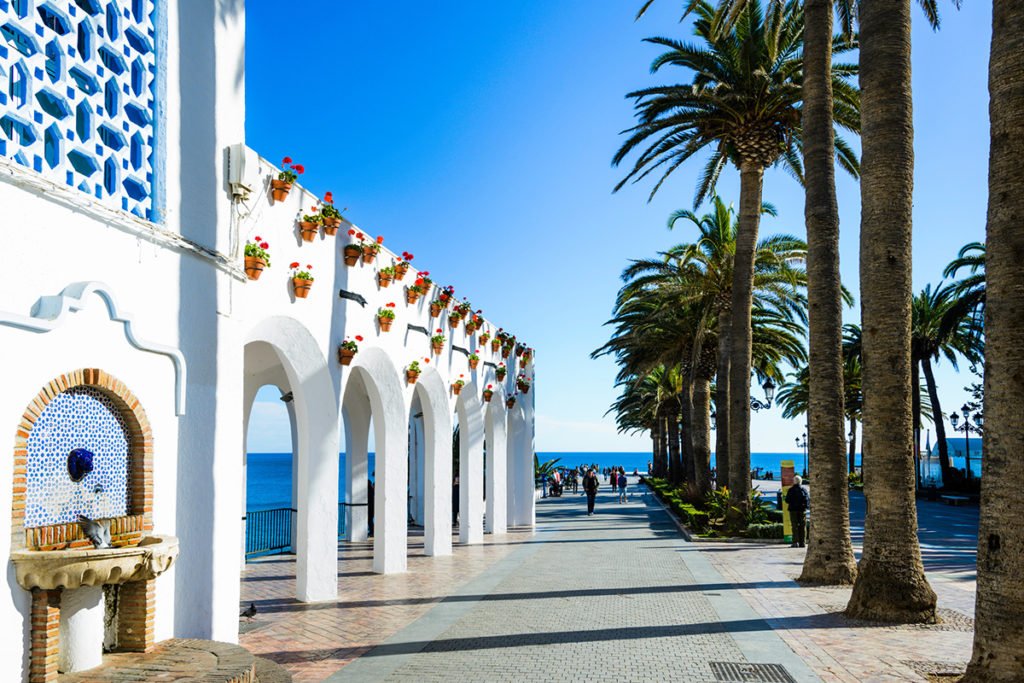
NICE TO KNOW: To this day, we can see huge rusty cannons under the Balcon de Europa. Where did they come from? The terrace is located on the former structure of the fortress and armory. Their strategic location allowed for defense against sea invaders, e.g. pirates. In 1882, the fortress was destroyed by British ships, and the mentioned cannons are the only remains from those times.
It is safe to say that Balcon de Europa is the beating heart of the town of Nerja – not only at the height of the season and not only due to tourists who admire the view of the amazing sea and the beach. Everyone knows that locals know best what is worth eating and which places are worth visiting. There are plenty of them here – they spend hot siestas, sitting in bars and restaurants, because they know what is good! Balcon de Europa is also the cultural center of Nerja – all concerts, performances and ceremonies take place here.
Atmospheric nooks on the Costa del Sol
If Nerja has stolen your heart, I recommend you to go to other nooks of the Axarquía region. Maro-Cerro Gordo is a protected area that impresses with its cliffs for 12 kilometers. Frigiliana is one of the so-called pueblos blancos, or white towns. Located north of Nerja, it is also known for its prehistoric necropolis.
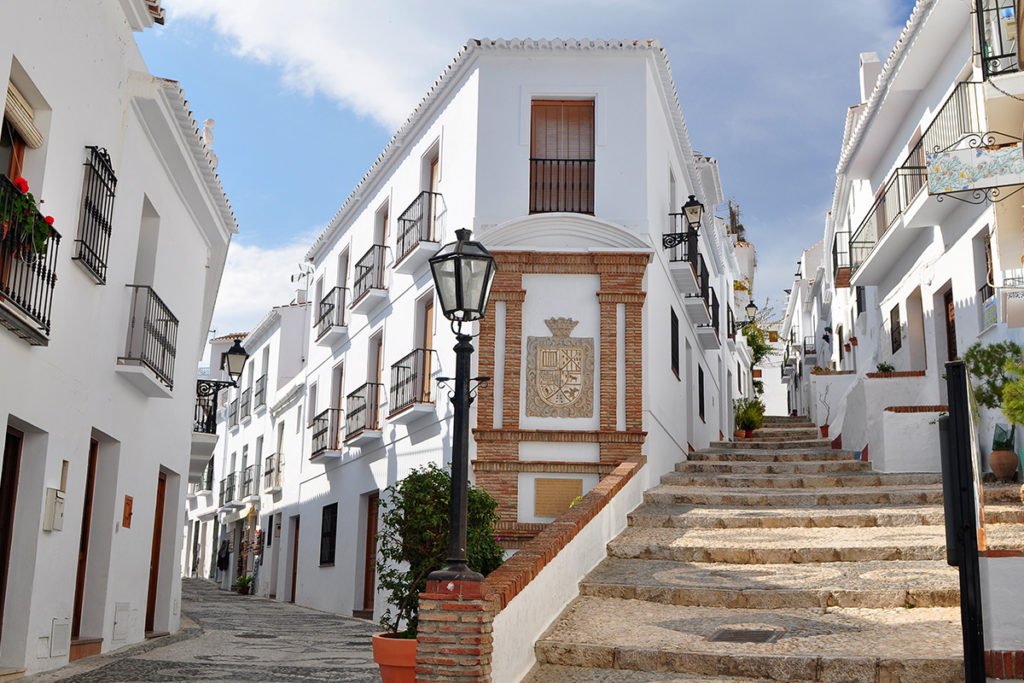
Other typically Andalusian towns that are not reached by average tourists are Árchez, Comares, Alcaucín, Viñuela, Rincón de la Victoria, Torre del Mar known for the Sugar Museum. Heading into the Iberian Peninsula, be sure to stop in Vélez-Málaga to see the 18th-century Arab fortress and the walls surrounding it.

